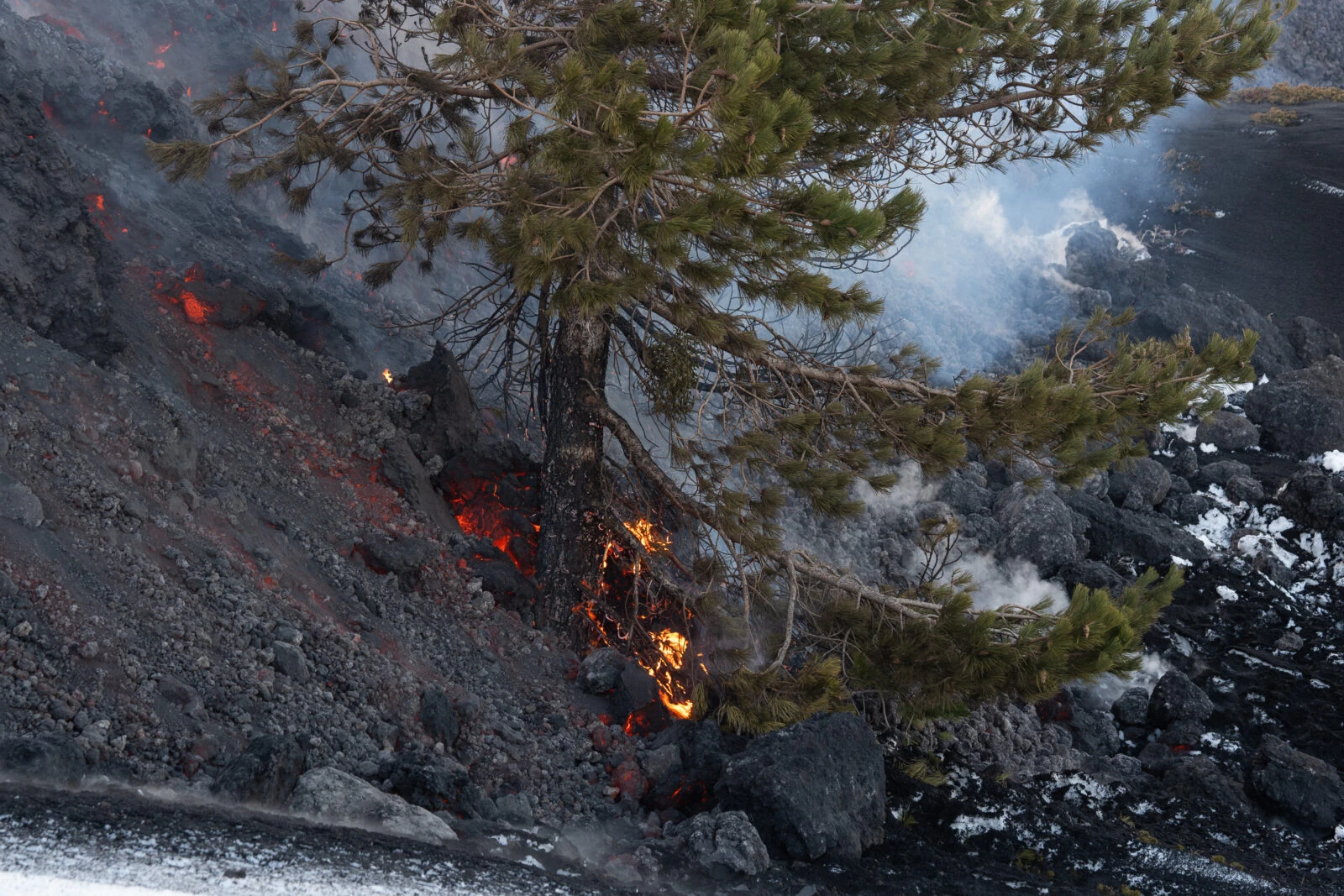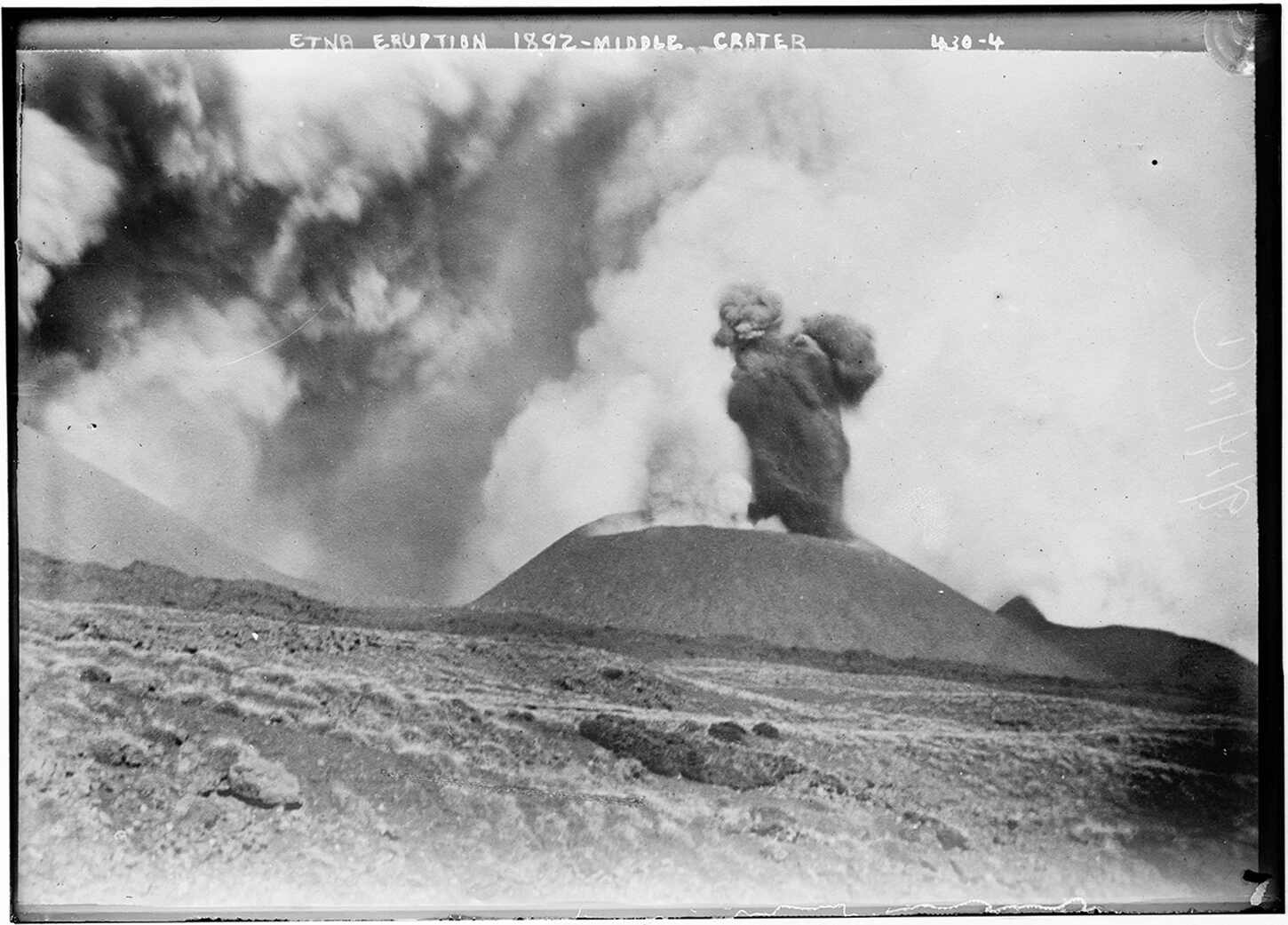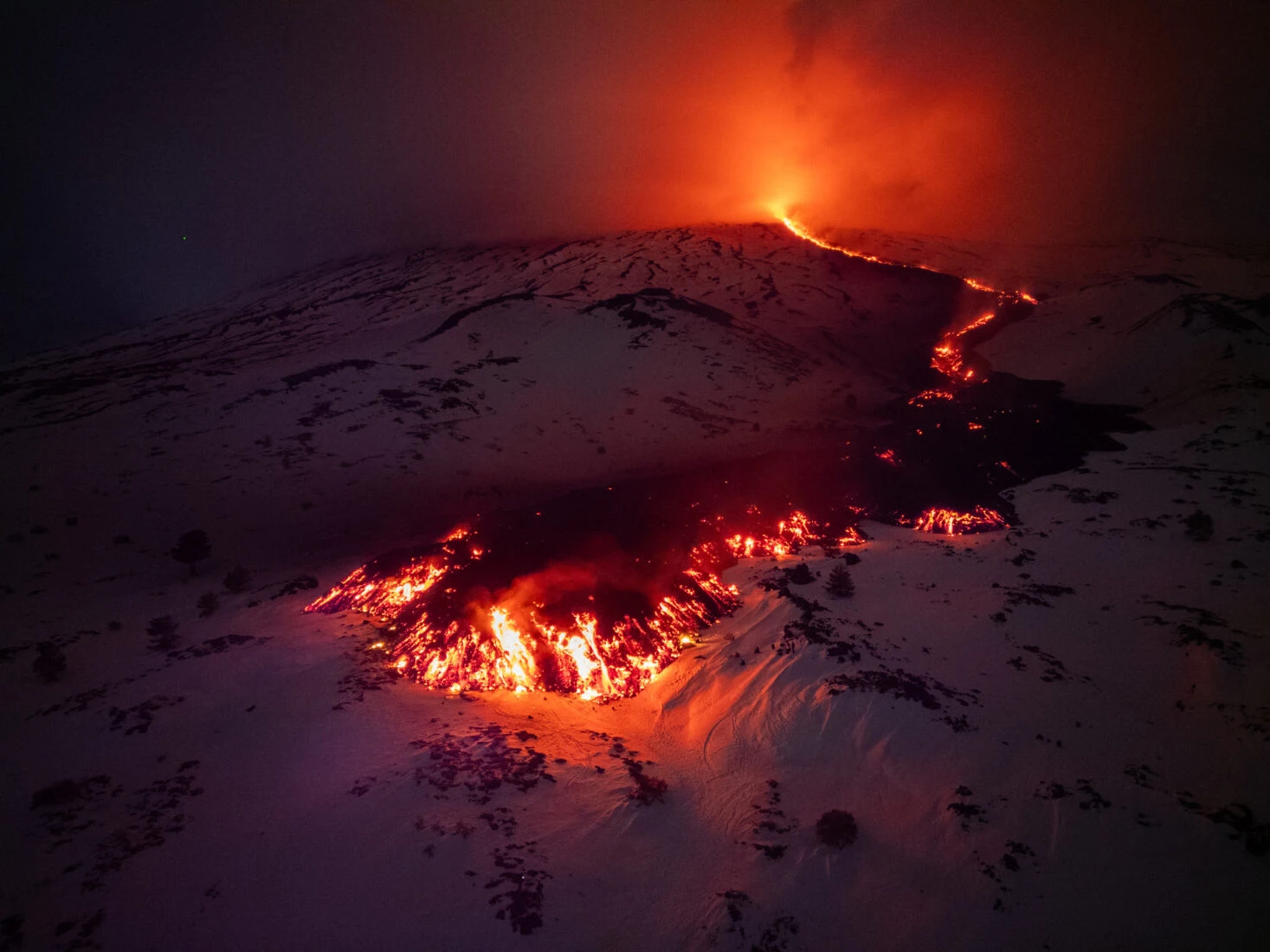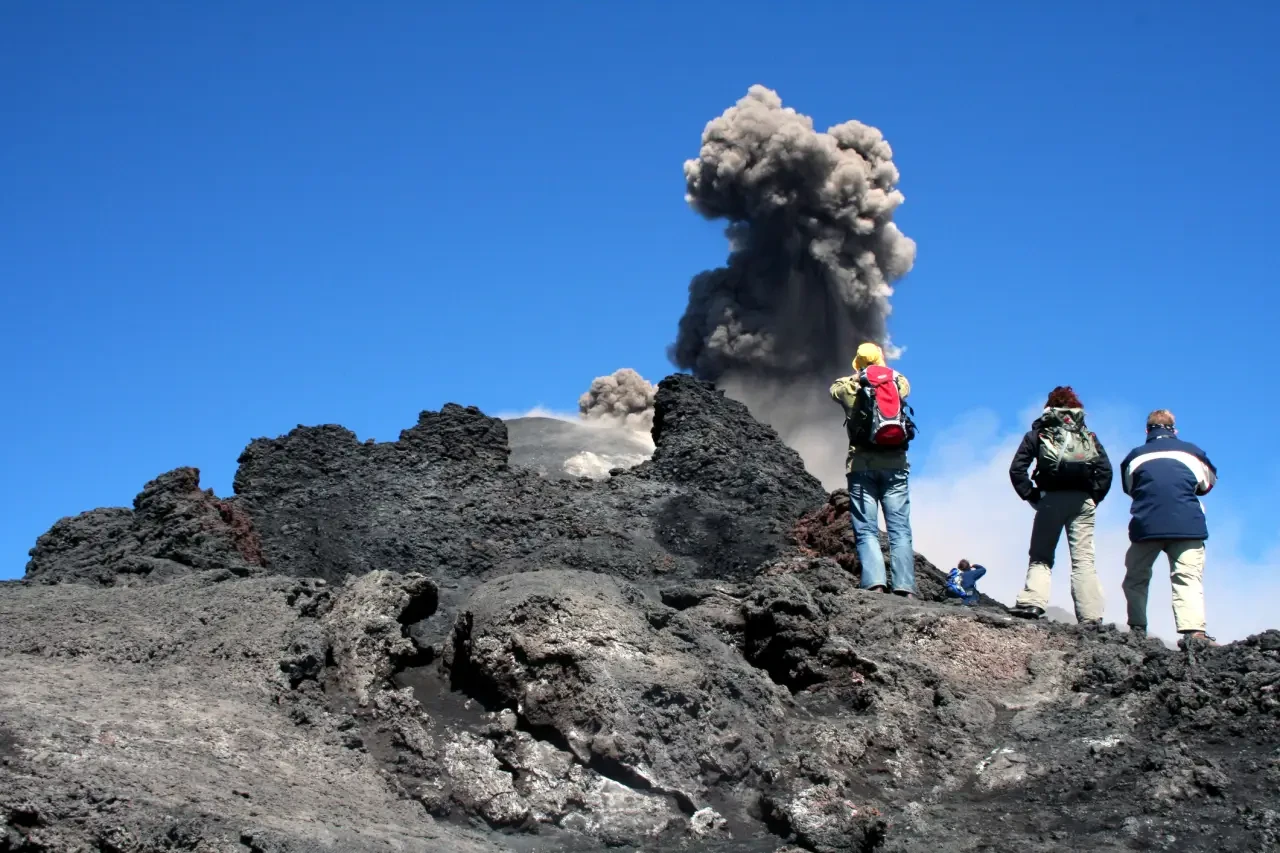Europe’s most active volcano Mount Etna roars back to life
 Mount Etna erupts again after a brief 48-hour lull, spewing lava and ash near Biancavilla, close to Catania, Italy, February 24, 2025. (AA Photo)
Mount Etna erupts again after a brief 48-hour lull, spewing lava and ash near Biancavilla, close to Catania, Italy, February 24, 2025. (AA Photo)
Mount Etna, Europe’s highest and most active volcano, has resumed its lava flow after a brief pause, with new volcanic activity reported on the evening of Feb. 22, 2025.
The eruption, occurring near Biancavilla in the Catania region of Italy, stems from a fracture approximately 3,000 meters (9842.5 feet) above sea level at the base of the Bocca Nuova crater.
The fresh lava flow is advancing along the southwestern flank of the volcano, partially overlapping with the previous stream that began on Feb. 8, 2025.

The lava has continued to descend, crossing high-altitude trails and reaching an elevation of approximately 1,850 meters near the Galvarina refuge.
Additionally, renewed activity has been observed at the Southeast Crater, where mild Strombolian eruptions resumed in the late afternoon of Feb. 23, 2025.

Authorities monitor situation; no immediate danger reported
According to the Italian National Institute of Geophysics and Volcanology (INGV), no significant changes have been recorded in the volcano’s parameters. Experts emphasize that the ongoing activity is within the expected range for an active volcano like Etna and does not indicate an abnormal increase in energy output.
Reports confirm that the lava flow remains confined to a narrow path, extending only a few hundred meters. Authorities continue to monitor developments closely, but no immediate threats have been identified for nearby communities.

A volcano that shaped history
Etna’s eruptions have influenced the history of Sicily since ancient times. In 396 B.C., during the Battle of Catania, Carthaginian forces attempting to advance around the volcano were defeated due to sudden volcanic activity. Throughout history, major eruptions have left lasting marks on the landscape and local populations.
One of the most devastating eruptions occurred in 1669, when the volcano expelled 830 million cubic meters of lava over four months, destroying numerous villages. Workers attempted to redirect the lava flow by digging trenches—marking one of the earliest recorded human interventions against volcanic activity.
Subsequent eruptions, such as those in 1852, 1928, and 1983, caused widespread destruction. The 1928 eruption cut off a railway and buried the village of Mascali, while the 1983 event forced authorities to use explosives to control the lava flow.

Scientific and touristic significance
Beyond its destructive power, Etna has long been a focal point for scientific research. In the 18th century, scientists flocked to study the volcano, laying the foundation for modern volcanology. Today, researchers continue to analyze its activity to better understand the mechanics of eruptions.
Despite its volatile nature, Etna remains a major tourist attraction. The surrounding villages offer unique experiences, while the volcano itself is a paradise for trekking and mountaineering enthusiasts.
Etna National Park, with its rugged volcanic landscape, draws visitors year-round, and in winter, ski resorts near the southern crater provide adventure seekers with a rare opportunity to ski on an active volcano.

Tourists drawn to Etna Volcano’s explosive views despite warnings
Professor Ovgun Ahmet Ercan, a geological engineer, stated that the fascinating eruptions of Mount Etna have been attracting tourists.
The erupting Mount Etna in Sicily is drawing many tourists. However, despite repeated warnings from local authorities, tourists are observed competing to capture photos and videos at dangerously close proximity to the active lava flows, posing a significant safety risk.



